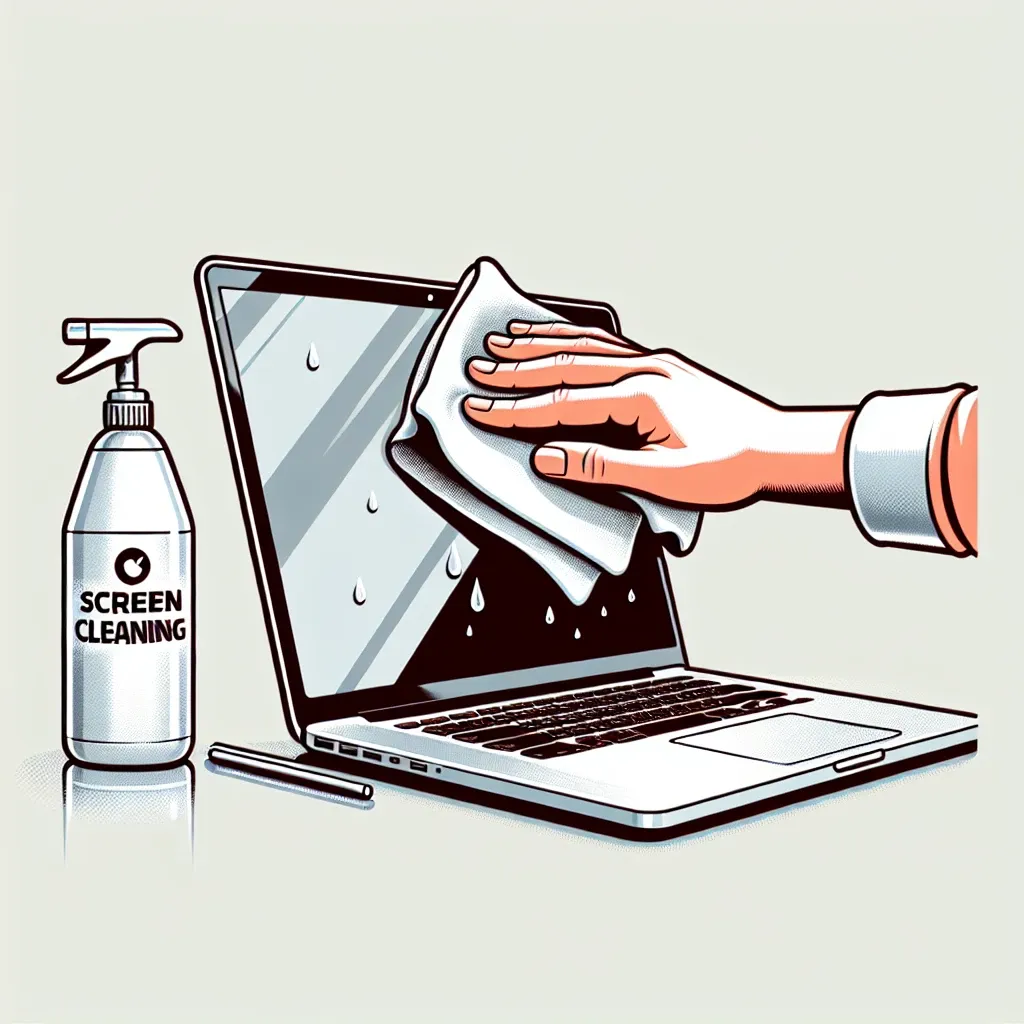The MacBook Pro, renowned for its stunning Retina display, requires regular cleaning to maintain visual clarity and enhance your user experience. Cleaning your MacBook Pro screen not only helps in delivering sharp visuals but also prolongs the life of the screen. However, cleaning a delicate display demands proper techniques and materials. In this guide, we will discuss safe and effective methods to clean your MacBook Pro screen.
Materials Needed
Before you begin cleaning, gather the following materials:
- Microfiber cloth
- Distilled water
- Isopropyl alcohol (70% concentration)
- Soft-bristled brush
- Small spray bottle
Steps to Clean Your MacBook Pro Screen
1. Power Off and Unplug
Always turn off and unplug your MacBook Pro before cleaning. This eliminates any risk of electric shock and prevents potential damage to internal components.
2. Remove Dust and Debris
Use a soft-bristled brush to gently remove loose dust and debris from the screen and keyboard areas. This prevents scratching the screen during the cleaning process.
3. Prepare Your Cleaning Solution
Fill a small spray bottle with a 1:1 mixture of distilled water and isopropyl alcohol. This solution is effective for removing grime without leaving streaks on the screen.
4. Apply the Cleaning Solution
Lightly dampen a microfiber cloth with the prepared cleaning solution. Never spray the solution directly onto the screen as this can cause damage if the liquid seeps into the device.
5. Wipe the Screen
Gently wipe the screen in a circular motion with the dampened microfiber cloth. Ensure to cover the entire screen, applying light pressure to avoid damaging the display.
6. Buff to Dry
After wiping with a damp cloth, use another clean, dry microfiber cloth to buff the screen. This will help remove any remaining moisture and polish the screen without leaving streaks.
7. Final Check
Inspect the screen under good lighting to ensure it is completely clean and free of streaks or spots. Repeat the cleaning process if necessary.
Common Mistakes to Avoid
- Using Harsh Chemicals: Avoid using window cleaners, ammonia, bleach, or other harsh chemicals as they can damage the screen’s coating.
- Applying Excessive Pressure: Pressing too hard can damage the delicate screen. Always use gentle pressure.
- Using Paper Towels: Paper towels can scratch the screen. Stick to microfiber cloths which are soft and safe for displays.
Tips for Maintaining a Clean Screen
To keep your MacBook Pro screen clean for longer, follow these tips:
- Regular Cleaning: Clean the screen regularly to prevent buildup of dirt and oils.
- Keep Hands Clean: Wash your hands before using your MacBook Pro to reduce the transfer of oils and dirt.
- Avoid Eating or Drinking: Refrain from eating or drinking near your device to prevent spills and splashes.
- Use a Keyboard Cover: A keyboard cover can help keep dust and debris off your display.
- Store in a Clean Environment: Keep your MacBook Pro in a dust-free area when not in use.
Conclusion
Keeping your MacBook Pro screen clean is essential for maintaining the quality of your display and ensuring a pleasant user experience. By following the simple steps outlined in this guide, you can enjoy a pristine, streak-free screen for years to come. Remember to clean your screen regularly and use the appropriate materials to avoid damaging your valuable device.

